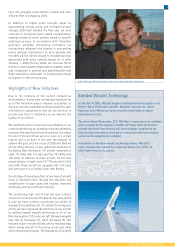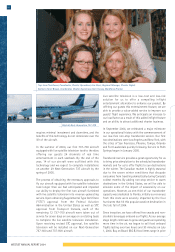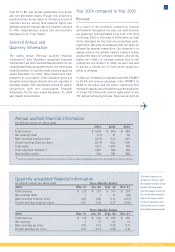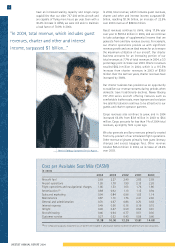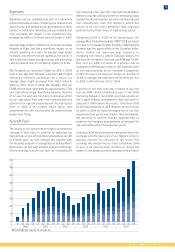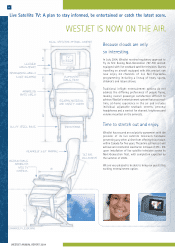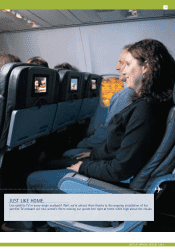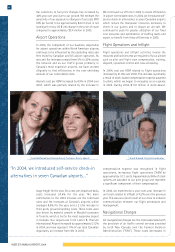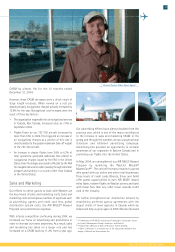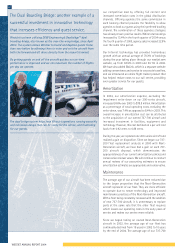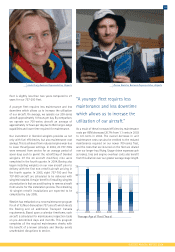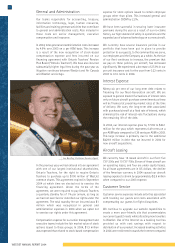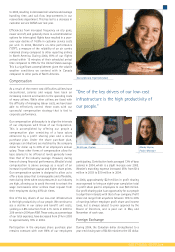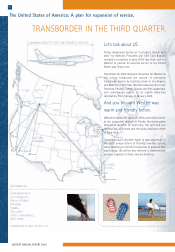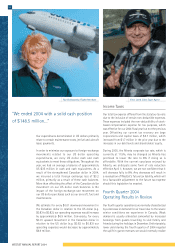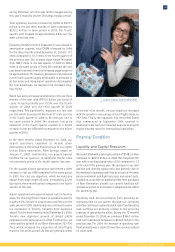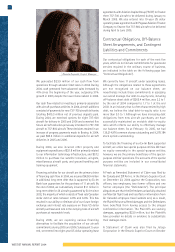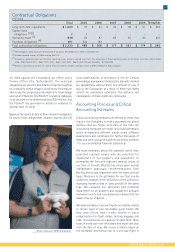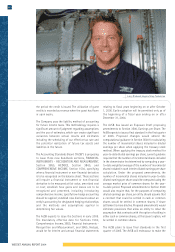Westjet 2004 Annual Report Download - page 28
Download and view the complete annual report
Please find page 28 of the 2004 Westjet annual report below. You can navigate through the pages in the report by either clicking on the pages listed below, or by using the keyword search tool below to find specific information within the annual report.
WESTJET ANNUAL REPORT 2004
28
our competitive lead by offering full content and
increased commission rates in the global distribution
channels. Offering agencies the same commission in
each booking channel provides the flexibility to allow
agencies to book our guests using their preferred booking
channel. The combination of these agencies strategies
has already shown positive results. While total bookings
increased by 13.4% in the fourth quarter of 2004 versus
the fourth quarter of 2003, agency sales increased 22.5%
over the same time period.
Our Internet technology has provided tremendous
growth with an annual average of 70.3% of bookings
during the year taking place through our westjet.com
website, up from 63.5% in 2003 and 50.1% in 2002.
We have also added BizLink, which is a separate website
adding convenience and service to corporate travellers,
and we introduced an online flight tracker product that
has helped reduce costs to our call centre, providing
even greater service for our guests.
Amortization
In 2004, our amortization expense, excluding the
impairment write-down on our 200-series aircraft,
increased 24.6% over 2003 to $78.8 million. Amortization
as a percentage of total operating costs, excluding the
write-down, was 7.4% as opposed to 8.4% in 2003. This
overall increase in amortization cost can be attributed
to the acquisition of our owned 737-700 aircraft and
increased investment in facilities, equipment and
technology. However, this cost declined on a per unit cost
basis from 0.92 cents to 0.88 cents.
During the year, we replaced one 200-series aircraft and
realized a gain on disposition. Since we began our 737-
200 fleet replacement analysis in 2000 with Next-
Generation aircraft, we have had a gain on each 737-
200 aircraft disposal, which demonstrates the
appropriateness of our current amortization policies and
conservative residual values. We will continue to conduct
annual reviews of our accounting estimates to ensure
amortization estimates are appropriate and conservative.
Maintenance
The average age of our aircraft has been reduced due
to the larger proportion that the Next-Generation
aircraft represent of our fleet. They are more efficient
to operate due to newer technology and improved
maintenance practices of the Next-Generation aircraft.
With a fleet being constantly renewed with the addition
of new 737-700 aircraft, it is unnecessary to replace
parts at the same rate that the older fleet requires
which lowers our operating costs in the early years of
service and makes our service more reliable.
Since we began taking on owned Next-Generation
aircraft in 2002, the average age of our fleet has
continually declined from 15 years in 2002 to 10 years
by the end of 2004. The average age of our 737-700
The Dual Boarding Bridge: another example of a
successful investment in innovative technology
that increases efficiency and guest service.
WestJet has been utilizing DEW Engineering’s Dewbridge™ dual
boarding bridge, also known as the over-the-wing bridge, since April
2003. This system allows WestJet to board and deplane guests faster
than ever before by allowing them to enter and exit the aircraft from
both the forward and aft doors directly from the airport terminal.
By getting guests on and off the aircraft quicker, our on-time
performance is improved and we can maximize the number of flights
per day we operate.
The dual bridge system helps keep WestJet operations running smoothly
and minimizes delays that can be costly for the airline, and frustrating
for our guests.



